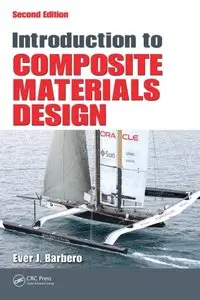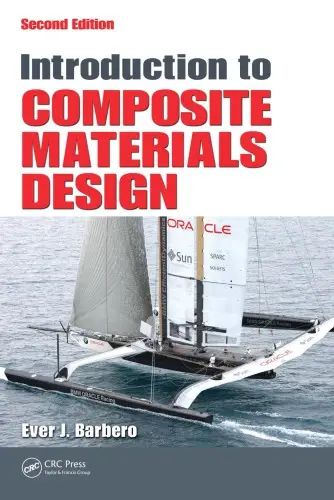Introduction to Composite Materials Design, Second Edition by Ever J. Barbero
English | 2010 | ISBN: 1420079158 | 562 pages | PDF | 5 MB
English | 2010 | ISBN: 1420079158 | 562 pages | PDF | 5 MB
Presenting a wealth of completely revised examples and new information, Introduction to Composite Materials Design, Second Edition greatly improves on the bestselling first edition. It incorporates state-of-the-art advances in knowledge and design methods that have taken place over the last 10 years, yet maintains the distinguishing features and vital content of the original.
New material in this second edition:
• Introduces new background topics, including design for reliability and fracture mechanics
• Revises and updates information on polymer matrices, modern fibers (e.g., carbon nanotubes, Basalt, Vectran) and fiber forms such as textiles/fabrics
• Includes new information on Vacuum Assisted Resin Transfer Molding (VARTM)
• Incorporates major advances in prediction of unidirectional-lamina properties
• Reworks sections on material failure, including the most advanced prediction and design methodologies, such as in situ strength and Mohr-Coulomb criterion, etc.
• Covers all aspects of preliminary design, relegating finite element analysis to a separate textbook
• Discusses methodology used to perform damage mechanics analysis of laminated composites accounting for the main damage modes: longitudinal tension, longitudinal compression, transverse tension, in-plane shear, and transverse compression
• Presents in-depth analysis of composites reinforced with plain, twill, and satin weaves, as well as with random fiber reinforcements
• Expands the analysis of thin walled beams with newly developed examples and MATLAB® code
• Addresses external strengthening of reinforced-concrete beams, columns, and structural members subjected to both axial and bending loads
The author distributes 78 fully developed examples throughout the book to illustrate the application of presented analysis techniques and design methodology, making this textbook ideally suited for self-study. Requiring no more than senior undergraduate-level understanding of math and mechanics, it remains an invaluable tool for students in the engineering disciplines, as well as for self-studying, practicing engineers.



